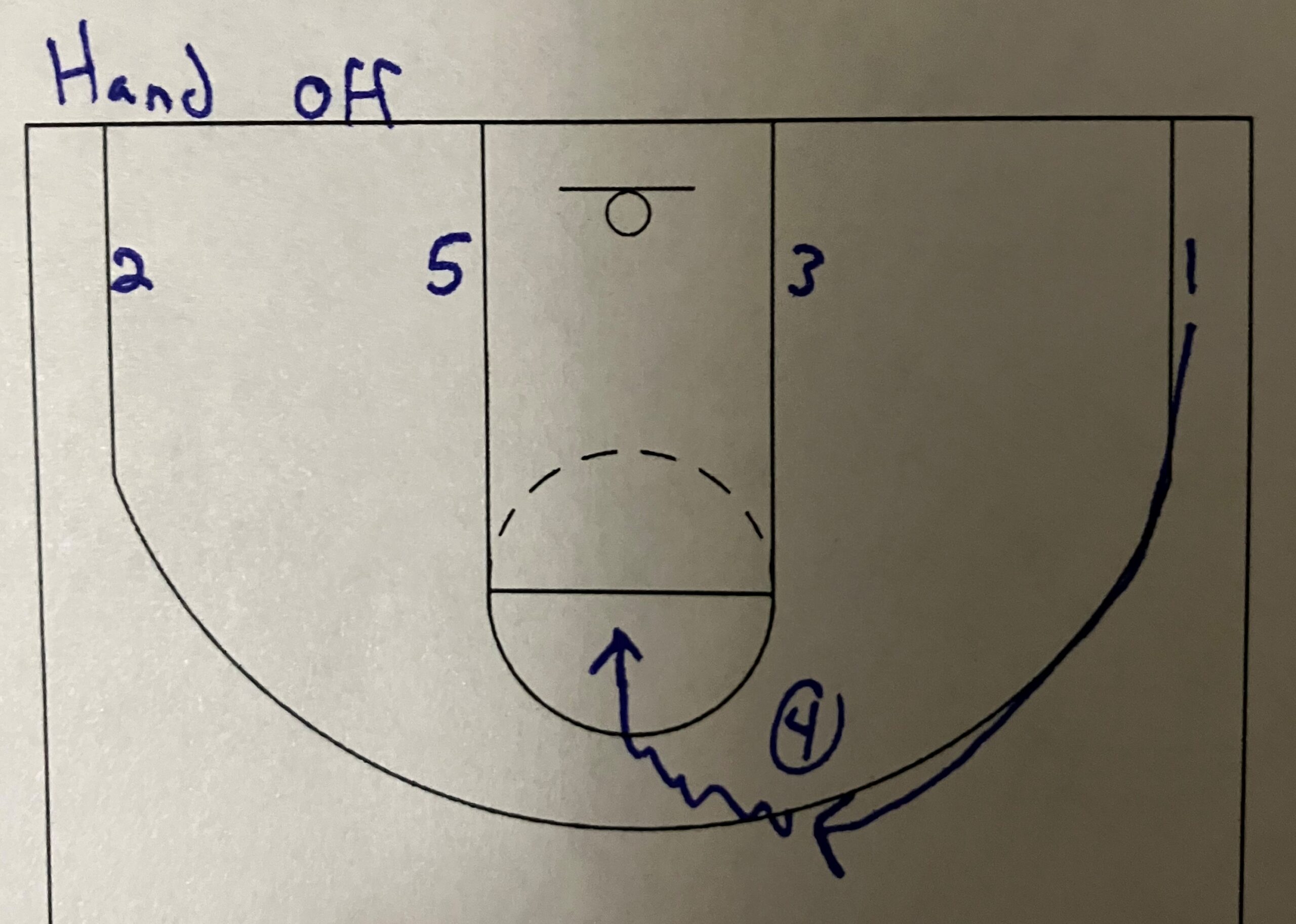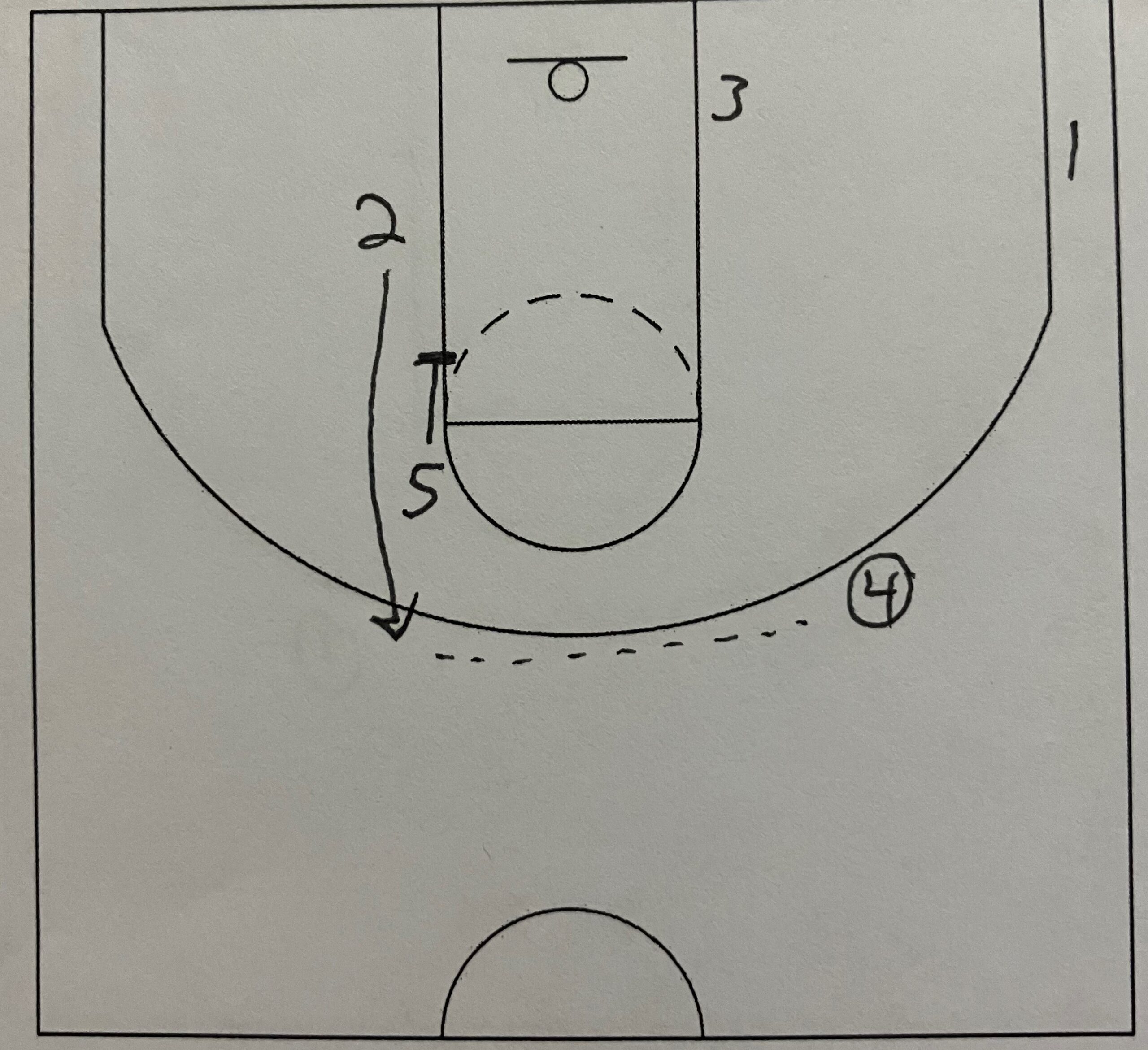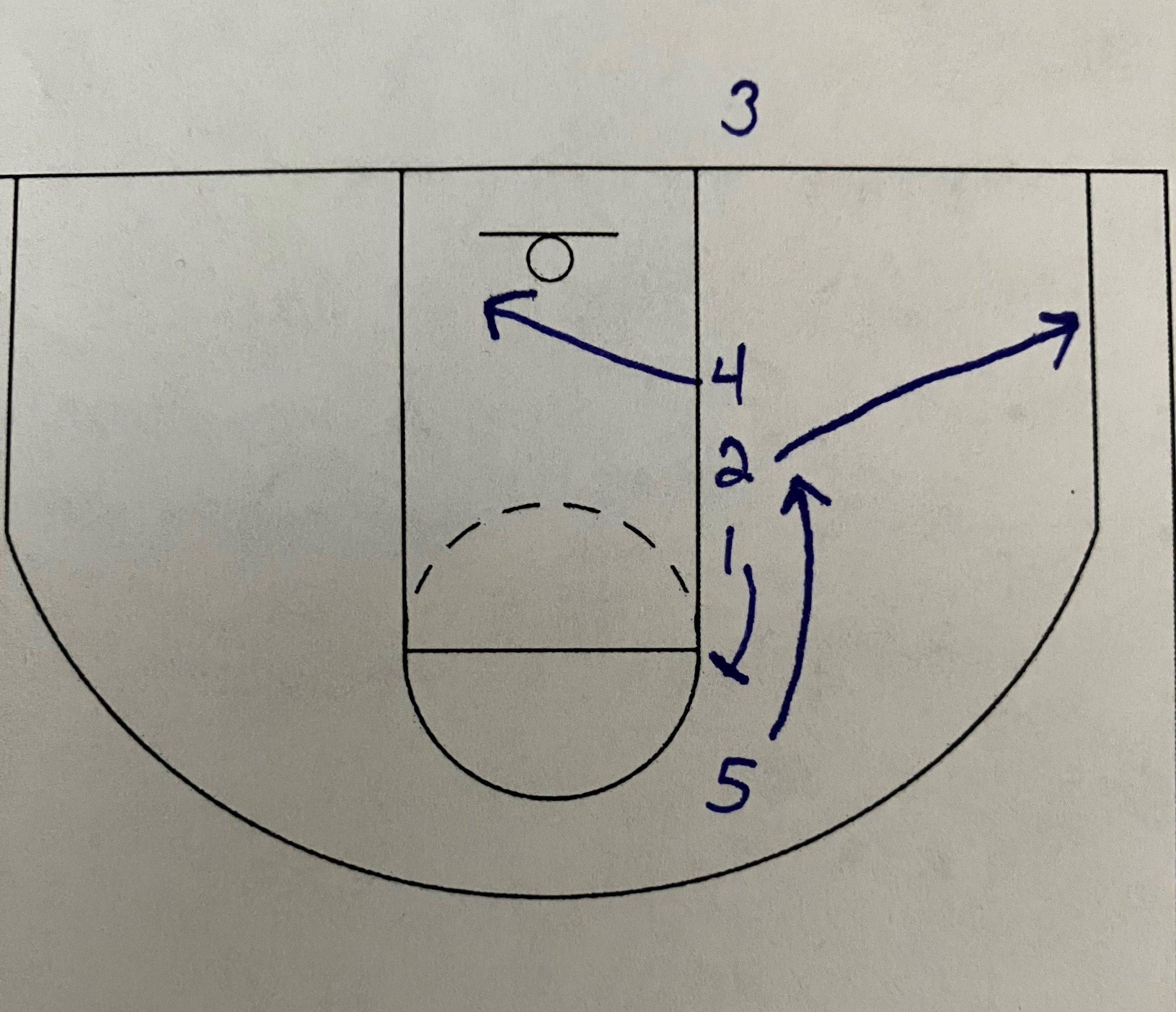One of the most used plays in basketball is the corner screen from a baseline out of bounds. I have used the basic corner screen as well as a bunch of variations. I have also scouted many opponents that have used the basic corner screen as well as a bunch of variations. It is a great play because when executed correctly it gets a wide open 3 for the best or next best shooter on the team. The corner screen is simple in what it takes to execute so all players are able to learn the play and execute during game time. However, since most teams and coaches run or have run the corner screen, it is becoming harder to get the shooter open when running to the corner. So here is the corner screen basic play as well as some variations.
Corner Screen
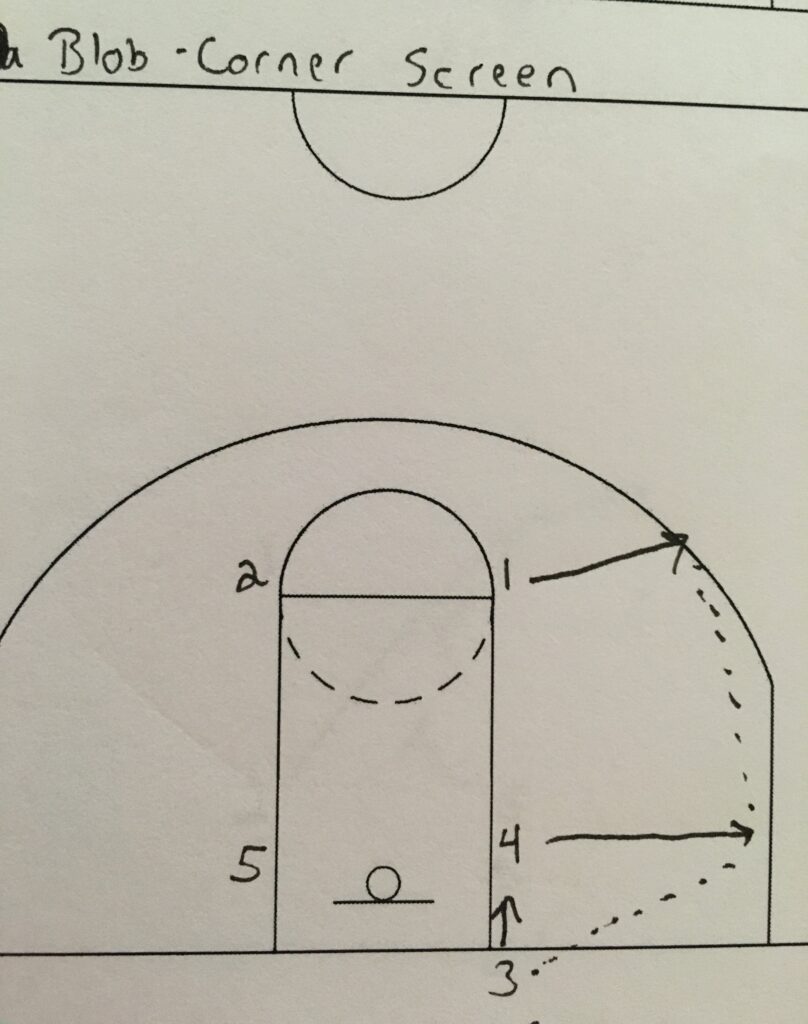
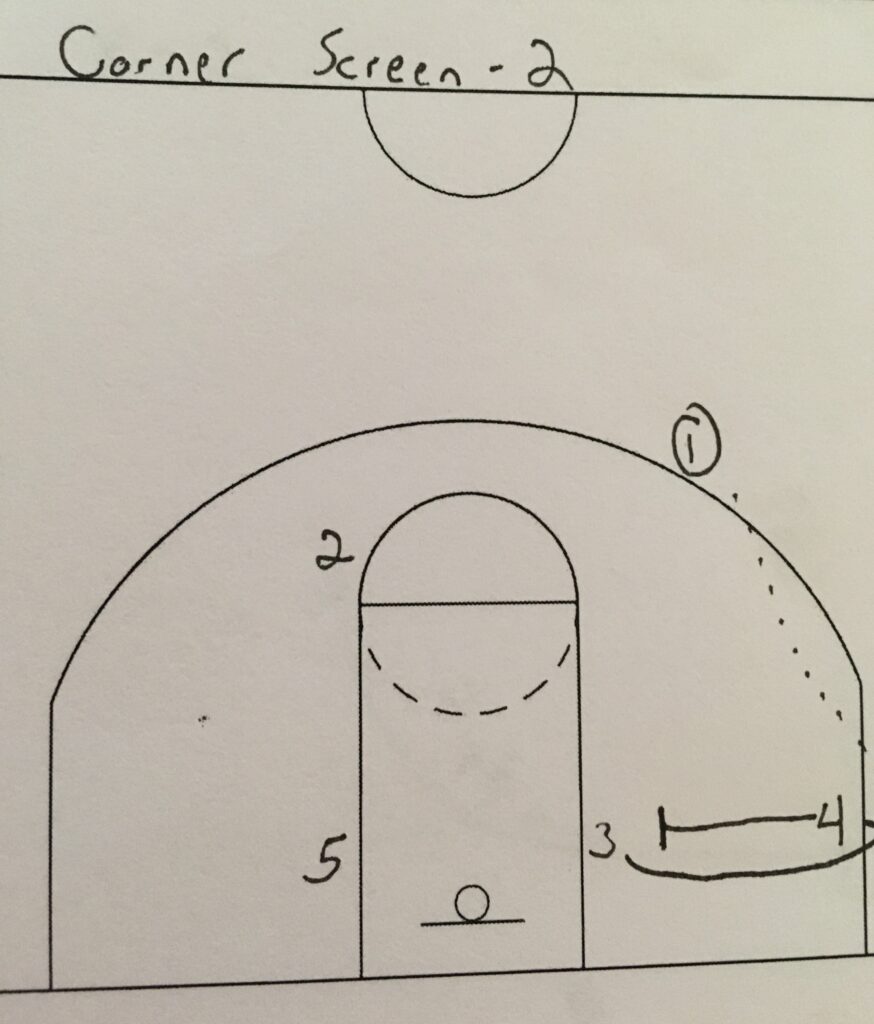
The above is the basic corner screen. It is most normally run out of a box set. For this article the 3 man is always going to be the shooter. The shooter takes the ball out of bounds. The man in front of the ball cuts hard out to the corner. The entry pass goes to the corner. The ball side top man cuts out foul line extended. The ball gets passed from the corner up the side to the 1 man. Then the corner man sets a in screen for the shooter to run to the corner for the return pass and hopefully a wide open 3.
This is the basic play. At the junior high and below this play should work most of the time. Even freshman and JV games, this basic play does work. But because this play is so widely used, it becomes much harder to run effectively at the JV level in some places and the varsity level most everywhere. Teams will still run this play even at the varsity level. But by changing a few things and adding in some variation, then this play all of sudden starts working again.
Variation #1-Tight(Curl Cut)
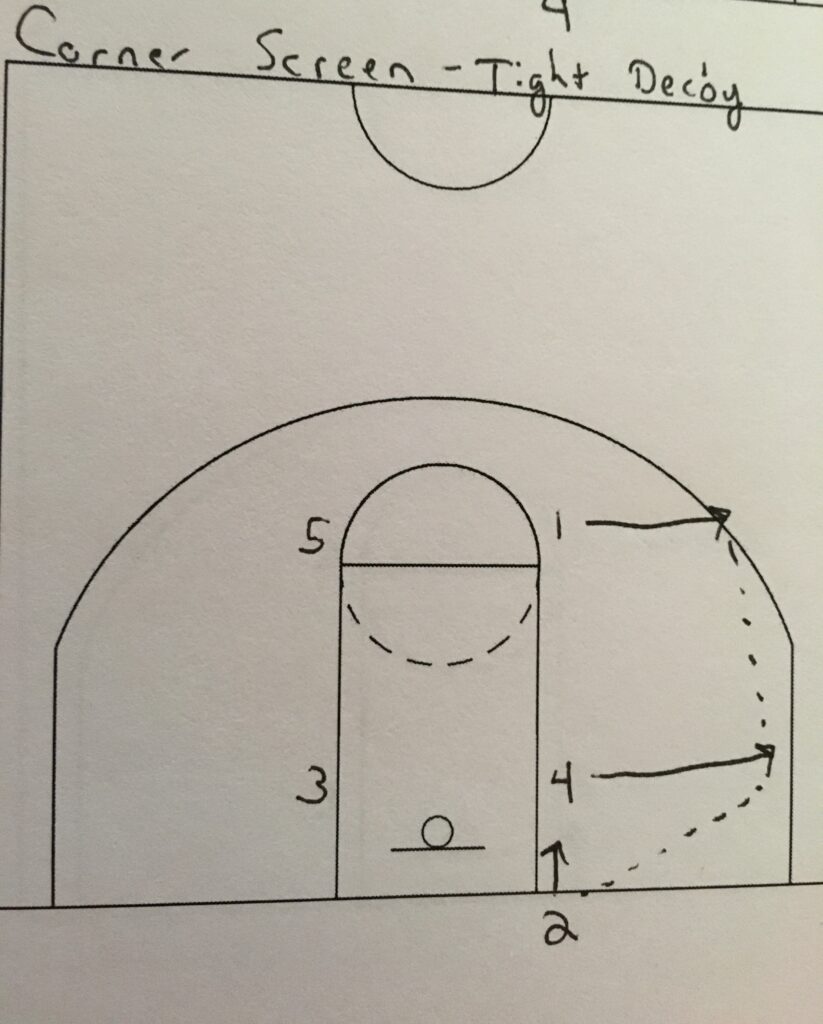
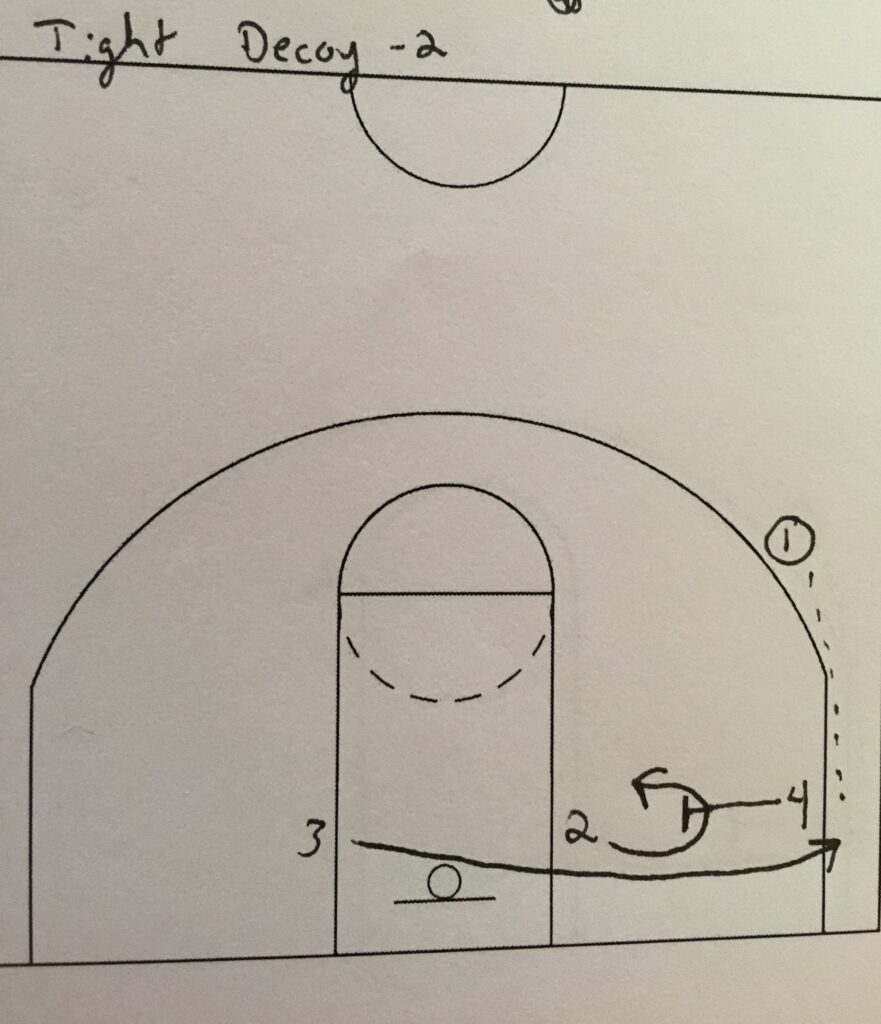
The first variation of the corner screen is to put the shooter on the backside block. The movement of the play is exactly the same as the basic play. The ball side block cuts to the corner, receives the entry pass, passes the ball up to the ball side top man, and finally sets the corner screen. The in-bounder steps in and runs out to the corner as if he is the shooter. This is where the variation comes into play. As the in-bounder(2 man in the diagram) starts to run to the corner then the defense will read the play. Now the 2 man runs a tight cut or curl cut around the screen. As the 2 man starts toward the corner then the 3 man(shooter) follows. As the tight cut takes place the 3 man should hopefully go unnoticed out to the corner.
This variation works because of the decoy movement of the 2 man(in-bounder). The tight cut can also work as a natural pick if the defender of the 3 man tries to go over the top of the screen. The defender should either run into the curl or has to adjust his run even farther off the baseline giving the shooter the space he needs to shoot. The other thing is if the defense still reads the corner screen and tries to jump the corner then the tight cut could be open for an easy pass and basket.
Variation #2-Double Screen
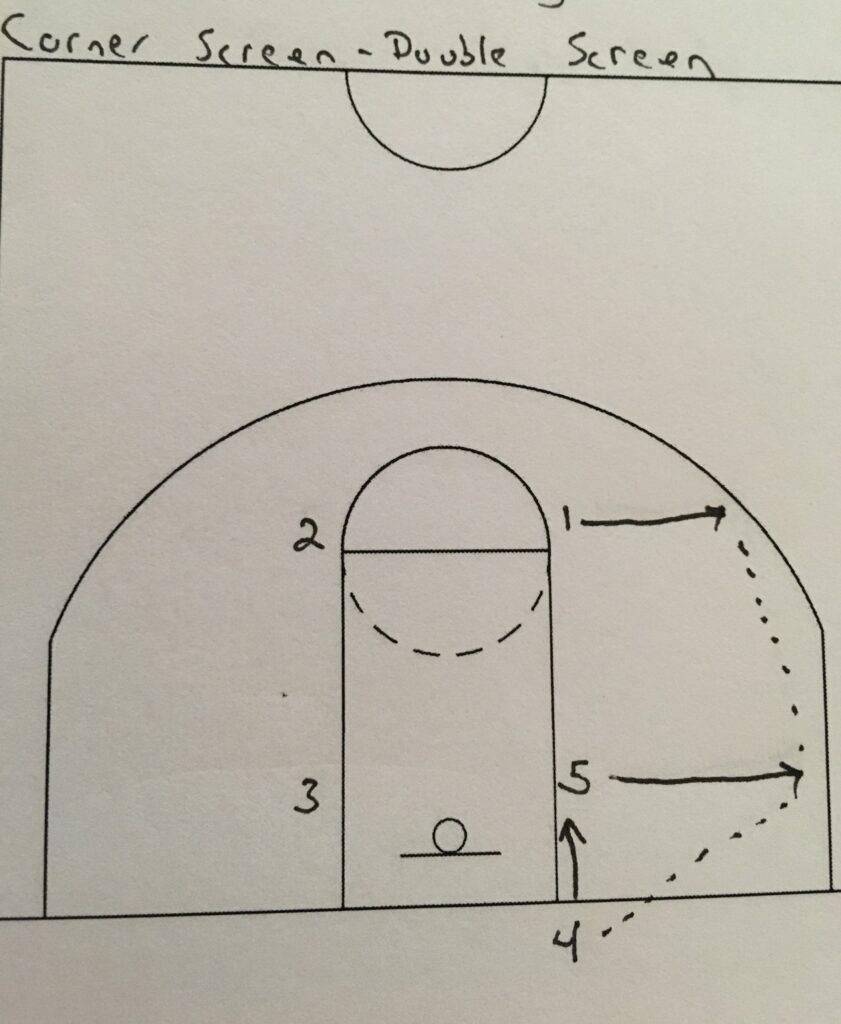
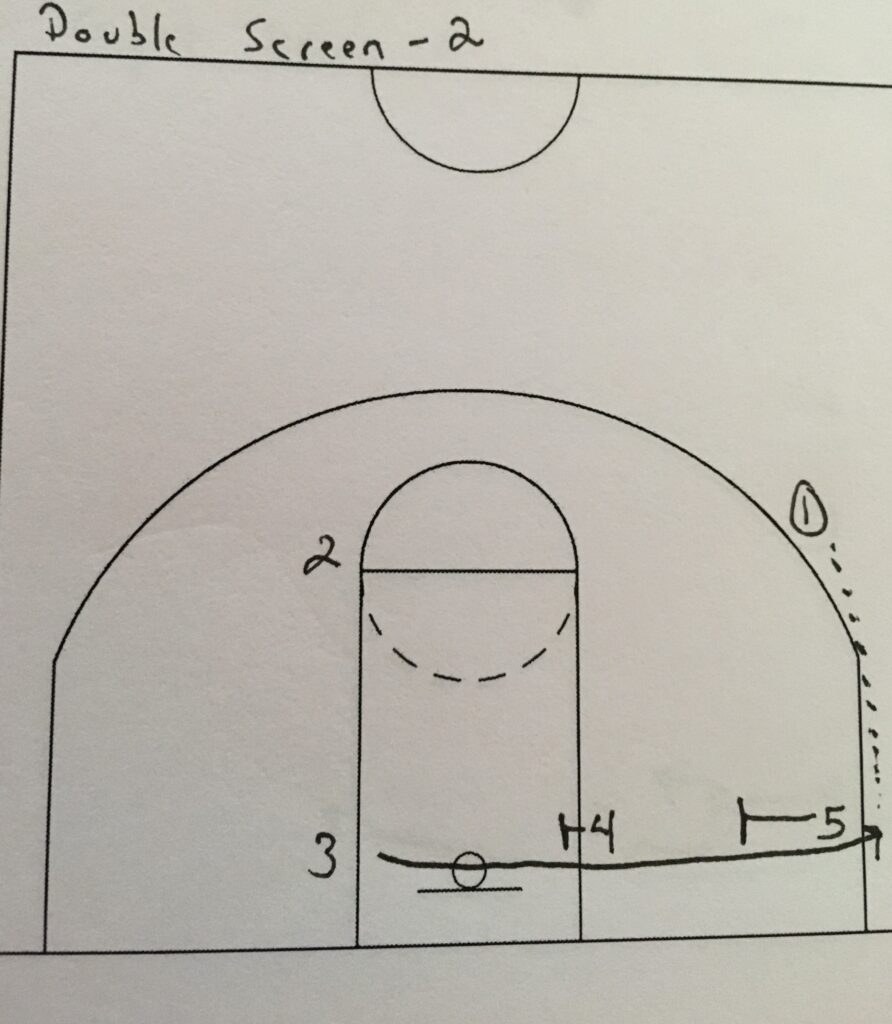
The 2nd variation is the double screen. Again the initial look of the play remains the same. The block cuts out to the corner. The pass is entered to corner and up the sideline, and the in-bounder steps into the block. Now the change is instead of the in-bounder running out to the corner using the in screen from the corner man, the in-bounder sets a screen for the backside block as they run to the corner. This takes the play from a single screen to a double screen.
Variation #3-Double Screen Curl Decoy
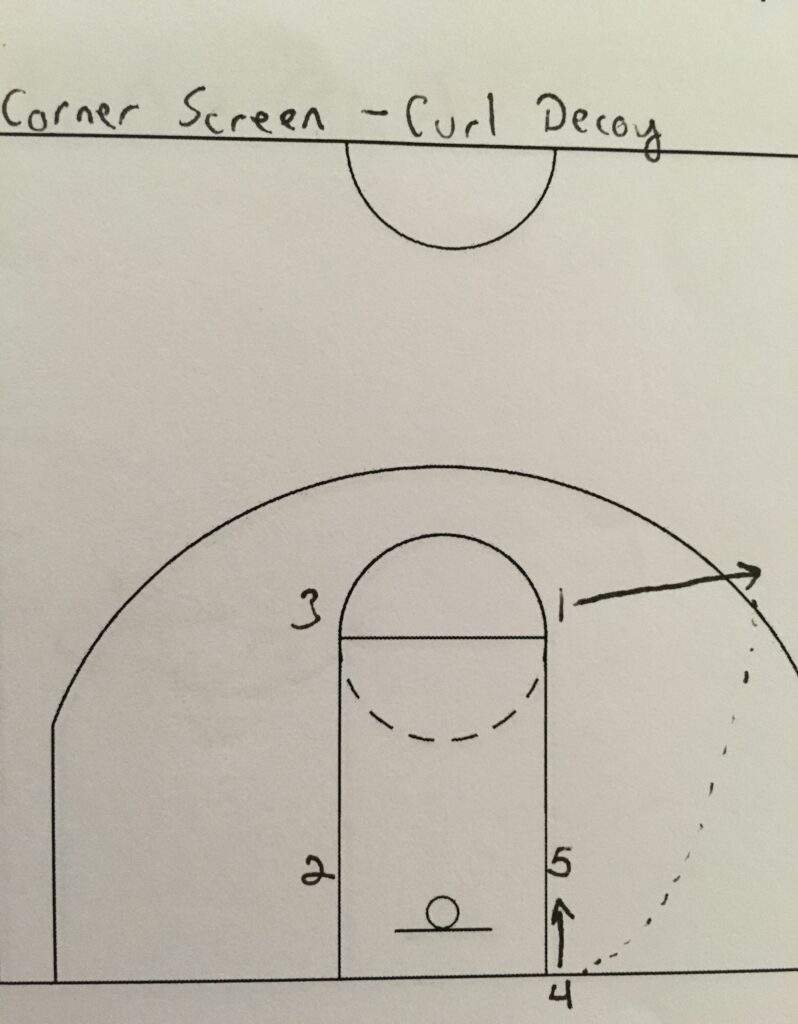

This variation takes the curl cut and the double screen and combines them. The first change is the entry pass goes straight to the foul line extended rather then the corner and up the side. You can still use the corner pass to start but I do not like the corner entry pass to start for this. The reason is in this variation, I want the double screen to be together rather then staggered. I also want the screeners away from the corner as much as possible.
Unlike the other variations, this is a play where all 5 players are involved. Because of this the defense is having all 5 players moving. So I want the defense away from the corner just in case one of them get confused or lost and makes a play by luck or stupidity.
The backside block is the decoy. This will be my best or second best shooter. The backside elbow will be the other shooter. Notice the two main players in this set both start on the backside. Once the ball is entered to the foul line extended, the in-bounder steps in to form the double screen. The backside block then runs a curl cut around the double screen. As the 2 man starts to move across, the 3 man(shooter) starts to move down and around as well. The hope is his defender tries to go over the top of the double screen and runs straight into the curl cut. As the 2 man clears, the 3 man follows straight out to the corner.
Variation #4-X

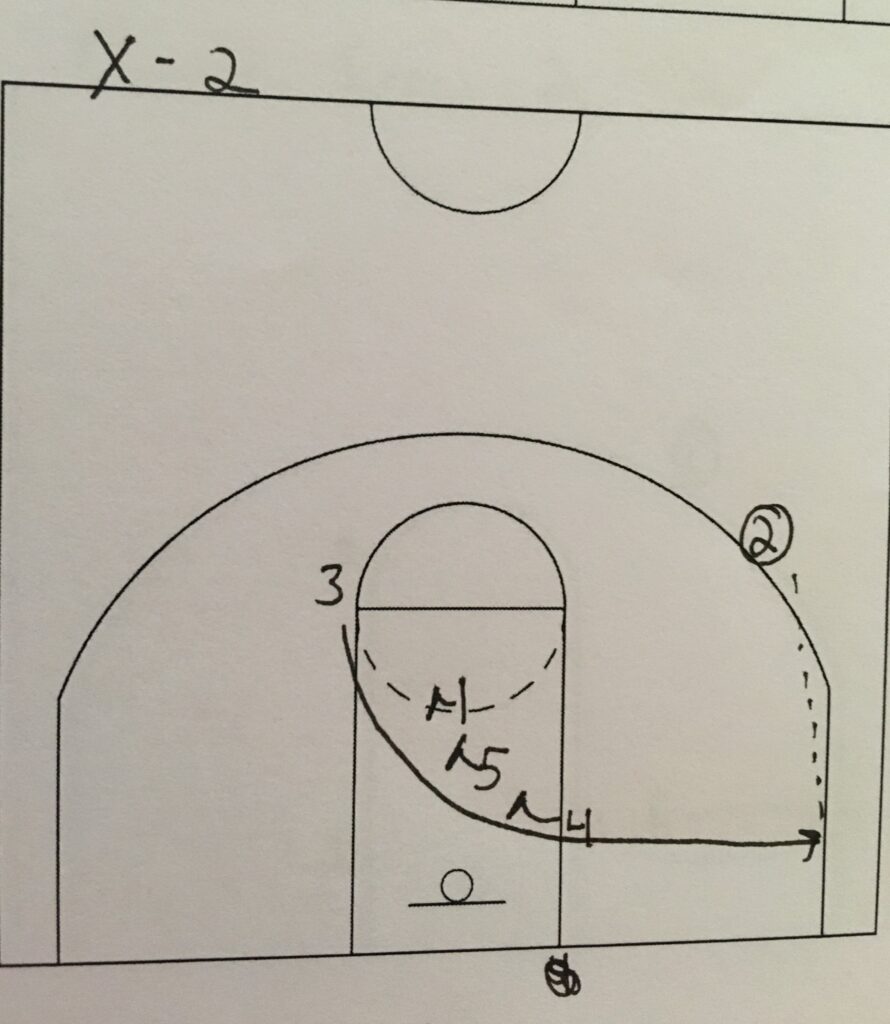
This variation is the most unlike the basic play. I call this X because of the initial X movement of the 2 and 3 man. It still starts in the same box setup. The 1 man(ballside elbow) comes down in the middle of lane to set the downscreen for the 2 man(backside block) to run out to the playside foul line extended for the entry pass. The 1 man needs to get into the middle of the lane or the 2nd part is not as good. The 5 man steps up towards the middle but does not get into the middle. The in-bounder(4 man) steps into the court to the block. This should create a line of 3 bodies. Now the second part of the X is the 3 man coming from the backside elbow down off the triple screen to the corner. Hopefully the triple screen frees up the 3 man running to the corner.
Conclusion
These are just 4 variations of the basic play. There are many more variations out there. These are just a couple I really like. What I look for in a play or set of plays is simplistic movement that can be changed to look different but is really just the same thing we always do. I like to try and make things look different for the opposing teams and coaches but are doing the same things we always do as a team for my players.
I do not want my players having to remember a bunch of plays. I want them playing fast and reacting rather then thinking. As you can see in the diagrams, the movement of the different variations are basically the same throughout each one. However, by altering the starting point or the type of screen, it hopefully is enough to confuse the defense to give us the corner 3 that we are wanting.
Let me know your favorite variations in the comments. Also ask any questions and I will try to answer them.

